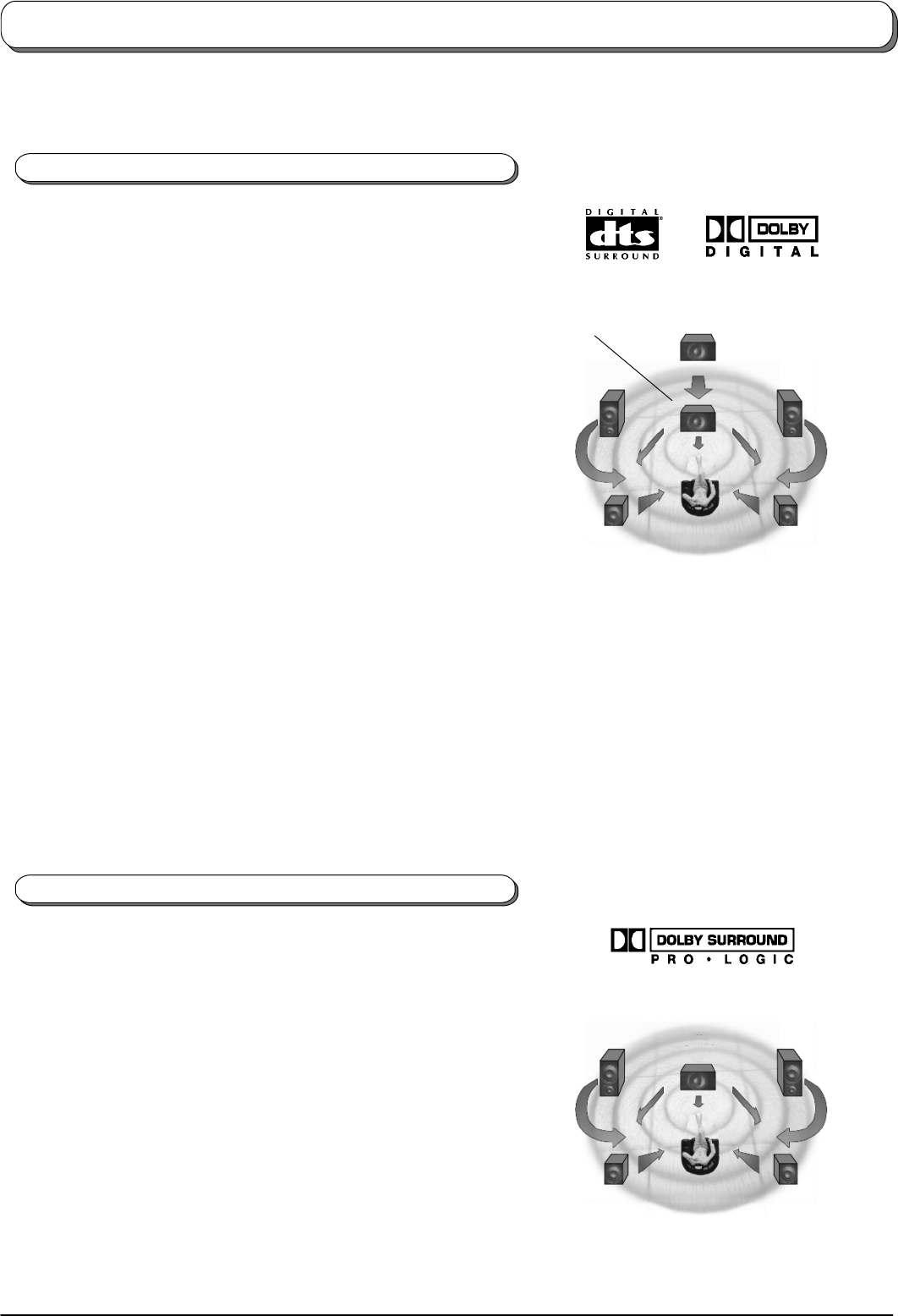
24
Stereo reproduction normally uses left and right speakers, but Digital Theater Systems (DTS), Dolby Digital and Dolby Pro
Logic Surround go further, adding a centre and other channels so you are immersed in sound and special effects.
Digital Theater Systems (DTS) / Dolby Digital
Both DTS and Dolby Digital split soundtrack information into 6
separatechannelsofsoundwhichareoutputthroughthespeaker
setup: five full range channels (left, centre, right, stereo left and
right surround) and a ’0.1’ (ie: limited range) bass channel. This
givesyousuperbsoundqualityfromDTS/DolbyDigitalencoded
tracks when a compatible speaker system is connected to your
TV.
Most dialogue comes from the centre channel, which enhances
dialogue and focuses it so it seems to come from the action on
screen. The separate rear left and right channels give a dramatic
sense of space, with sounds travelling in all directions between
front, centre and rear channel speakers (eg: a rocket going
overheadstartsbehindyoutotheleftandexplodes infrontofyou
totheright). The’0.1’LowFrequencyEffects(LFE)channelgives
impacttobasssounds andto specialeffects morefeltthan heard
(eg: the thud of a dinosaur footfall or the rumble of thunder).
While DTS and Dolby Digital are both high quality, ’5.1’ channel
surround systems,the twosystems differi nho wthey breakdo wn
and store sound information.
They also differ i n how they work with existing speaker setups:
Dolby Digital has been developed to be backwardly compatible
withDolbyProLogicandconventionalstereosetups.DTS,onthe
other hand, focuses on the high quality, 5.1 channel surround
output; choosing not to develop backward compatibility with
existing sound systems.
Note:
D External equipment is usually connected to the TV via one of
the Scart sockets to provide pictures and sound (eg: a VCR
player connected to AV2). To receive a DTS o r Dolby Digital
encoded soundtrack from compatible equipment (eg: a DVD
player,a set top box),you will also need to connect an optical
or coaxial cable to one of the TVs digital audio sockets. See
pages 27 to 28 for connection details, also see the Digital
Audio option in the SOUND menu, page 9.
Dolby Pro Logic
DolbyProLogicSurroundusesfourchannelsofsound:left,right,
centreand a monorear channel,giving excellentreproductionof
Pro Logic enco ded tracks w hen a compa tibl e sp eaker system is
connected to your TV. Most dialogue comes fro m the centre
channel, which enhances dialogue and focuses it so it seems to
come from th e action on screen. The re ar channel is used to
immerseyou in atmosphere andspecial effects, the sameoutput
is sent to both rear speakers.
As with Dolby Digital, Pro Logic is backwardly compatible with a
conventional stereo sp eaker setup.
Notes:
D To get Pro Lo gic information from Pro Logic encoded TV
programmes, you must be able to receive stereo
transmissions. If stereo transmissions are not transmitted in
yourareathentheProLogicinformationwillnotbe presenton
TV transmissions and Pro Logic decoding will only produce a
centre channel output.
D See pages 27 to 28 for connection details.
Surround sound systems
Centre speaker
Centre speaker
Subwoofer/
LFE speaker
Rear right
surround
speaker
Rear left
surround
speaker
Front
right
speaker
Front
left
speaker
Rear right
surround
speaker
Rear left
surround
speaker
Front
right
speaker
Front
left
speaker


















